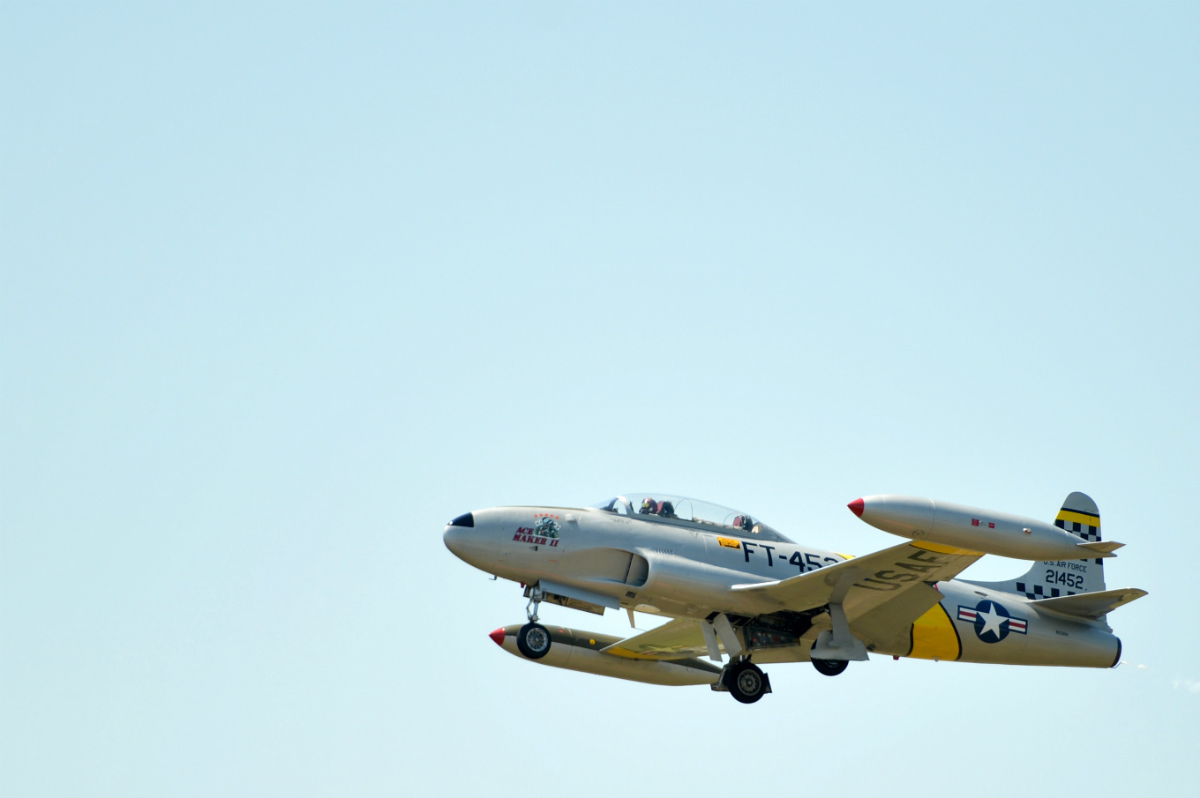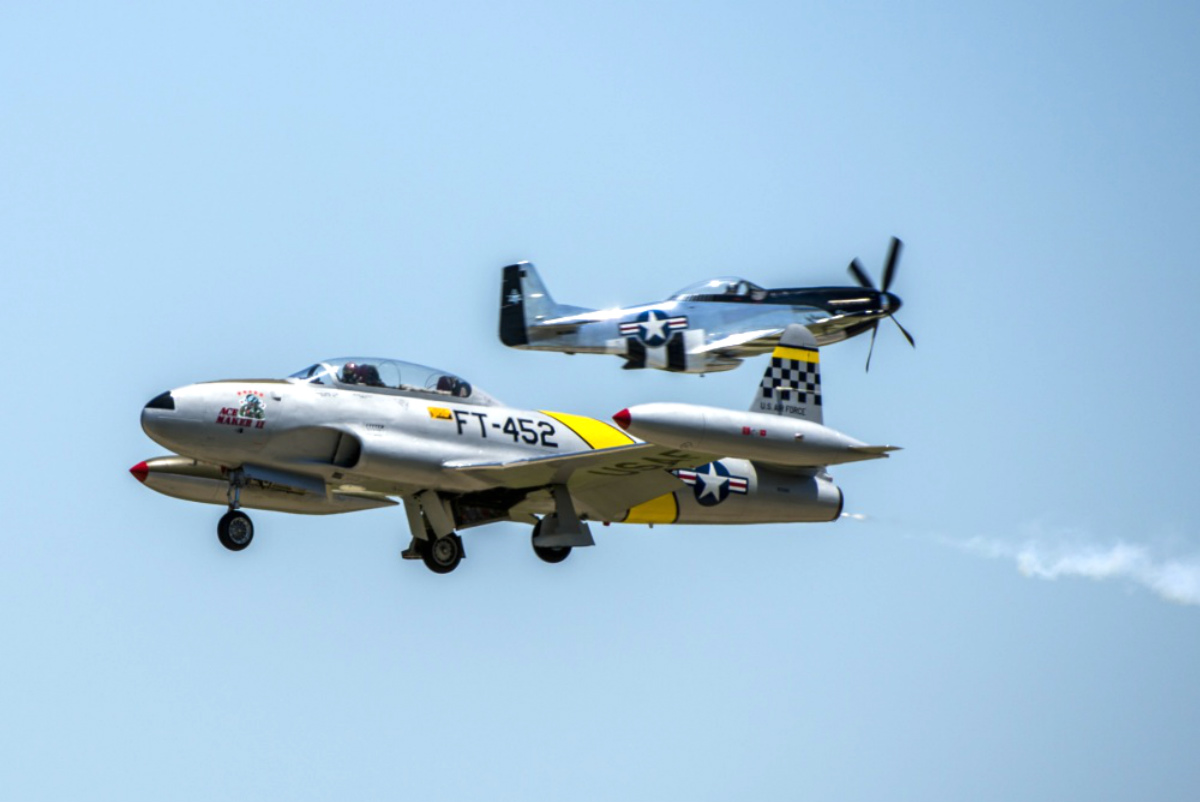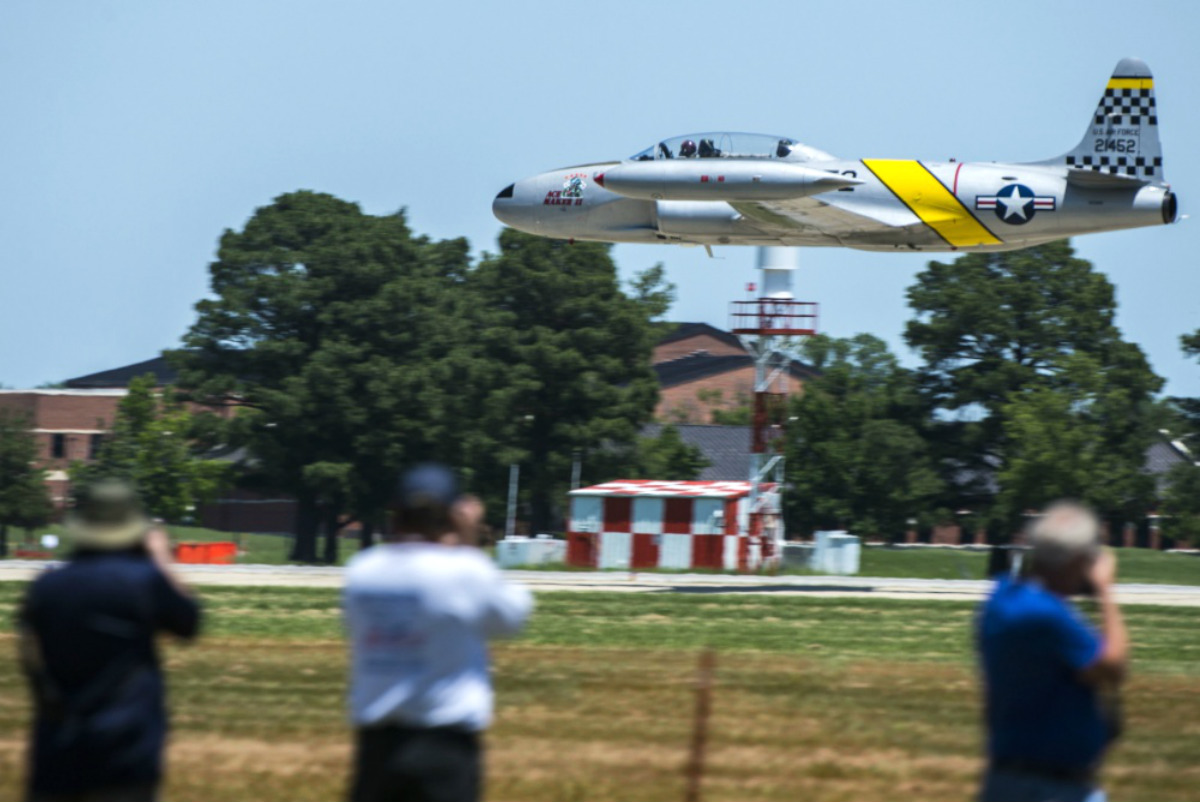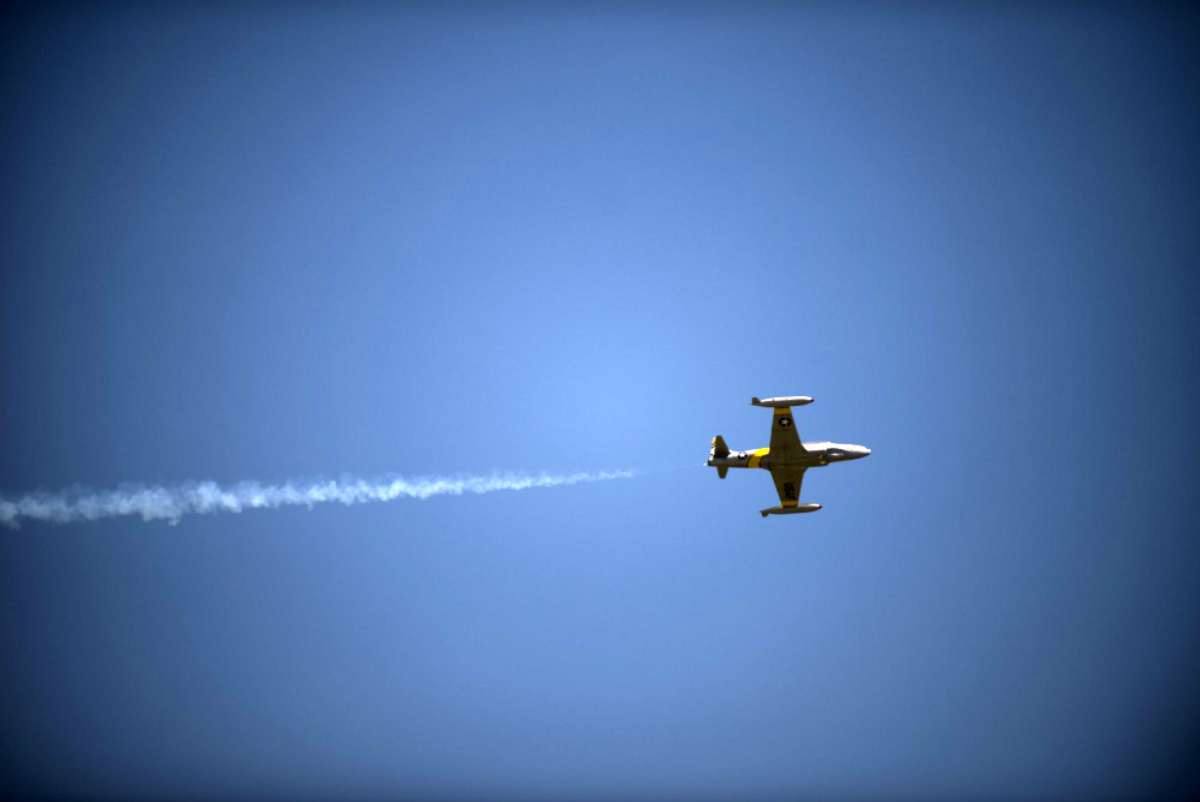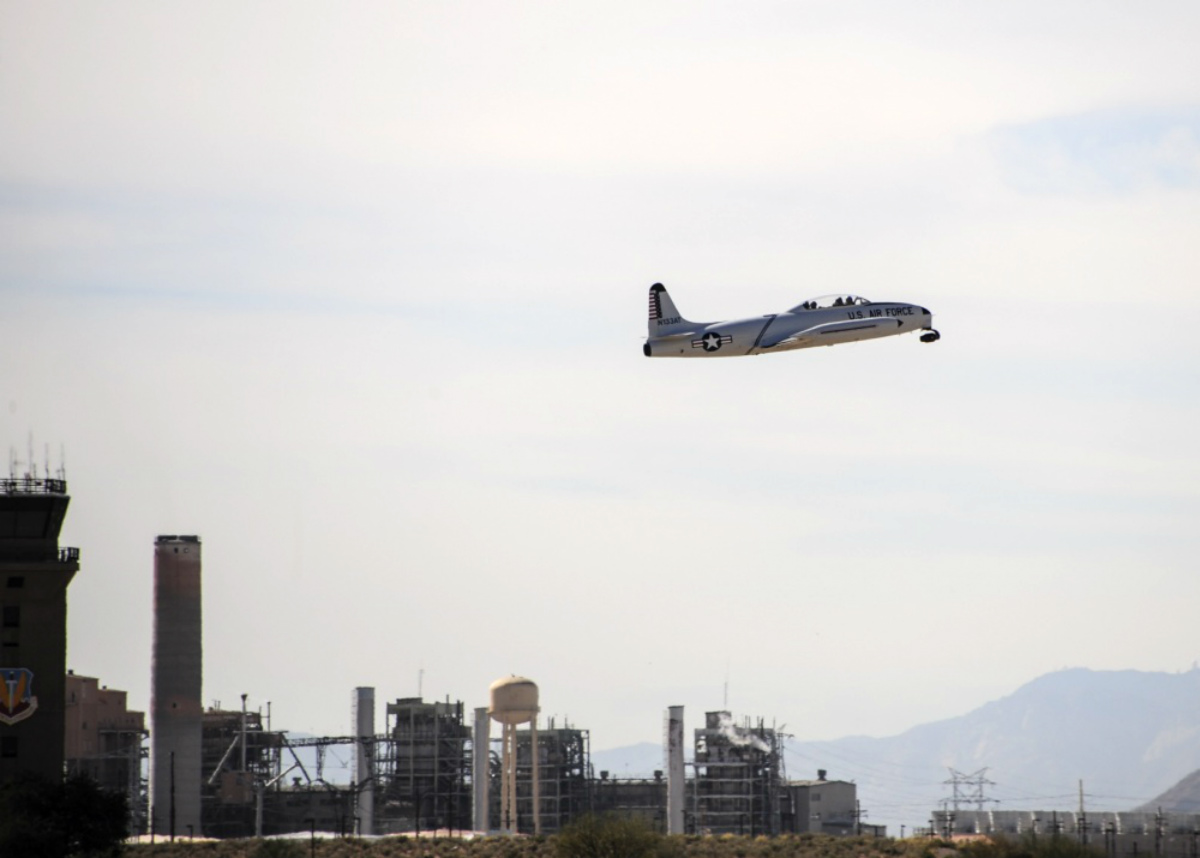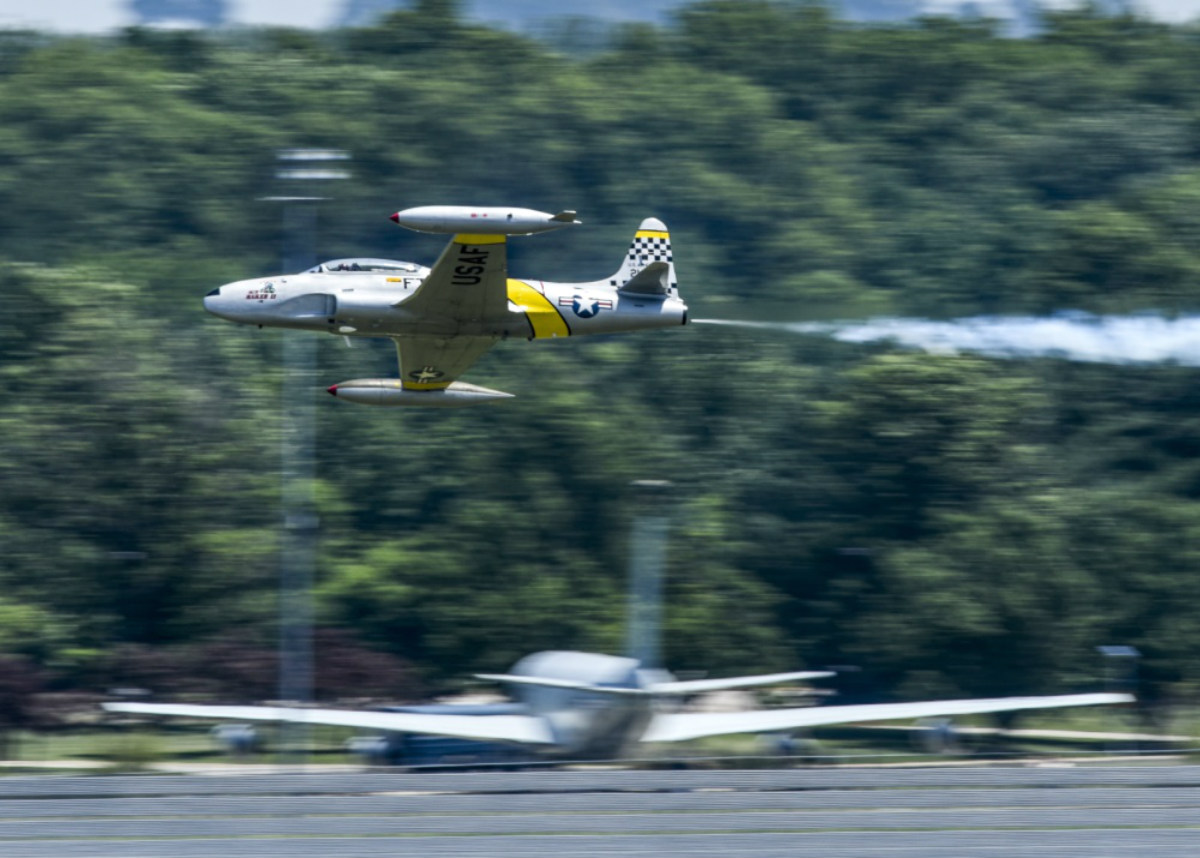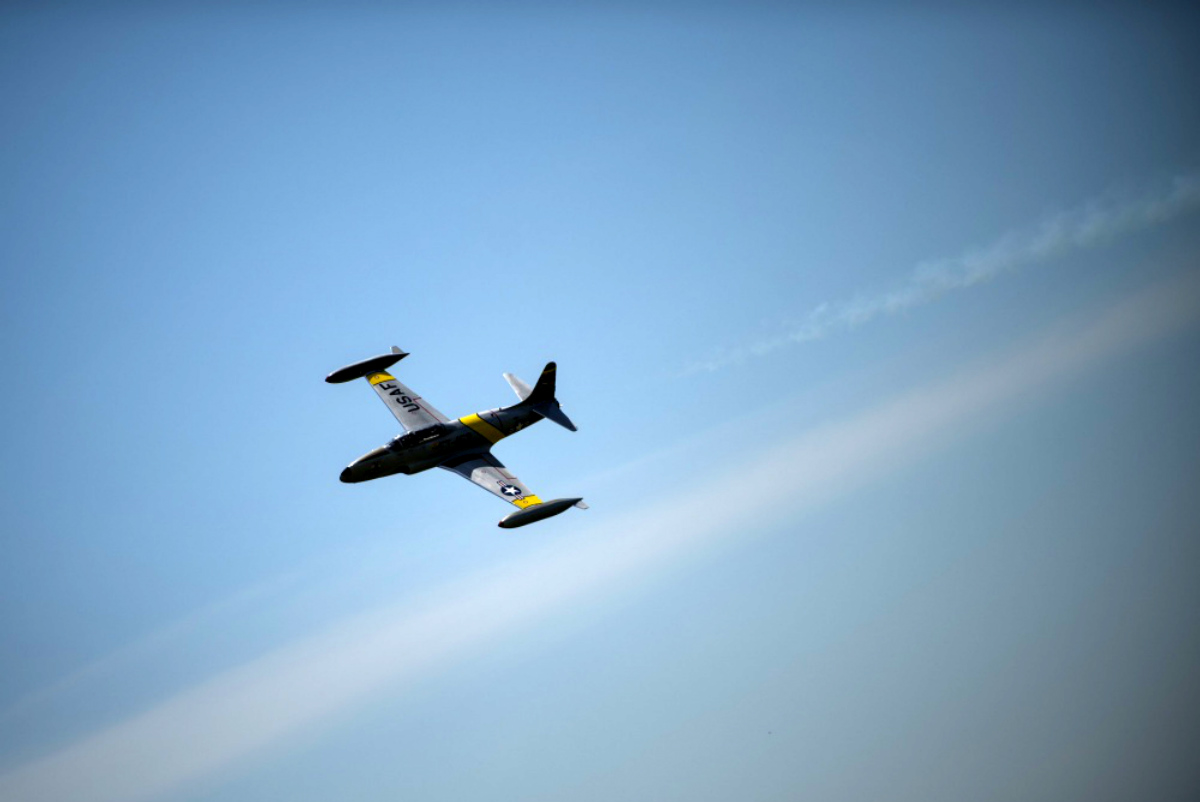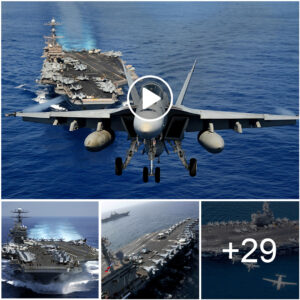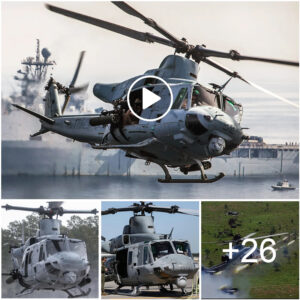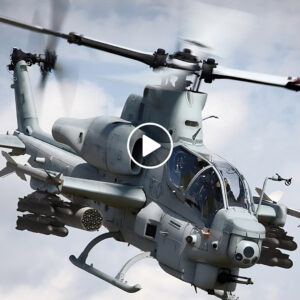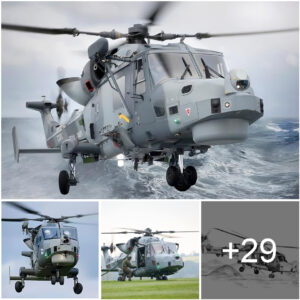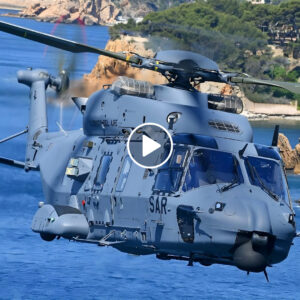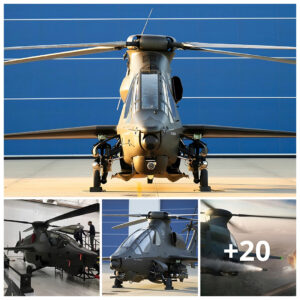Lockheed produced the first jet fighter to enter service at the end of World War II, the P-80. It was short lived in a world of rapidly advancing aeronautics. The P-80 was a straight winged fighter jet powered by a lone engine. While preparing for retirement, Lockheed and military analysts saw great potential in the P-80 as a trainer aircraft. Lockheed outfitted its P-80 frame into a training vehicle for entry level fighter pilots, which became the T-33 Shooting Star.
Equipped with a second seat for a trainer, the T-33 Shooting Star would see extensive distribution throughout the world as a non-combat training jet aircraft. Armament hard points and internal gun bays were retained in the T-33 Shooting Star to allow pilots to train at the gunnery range, but the aircraft was never meant to compete for air-to-air superiority.
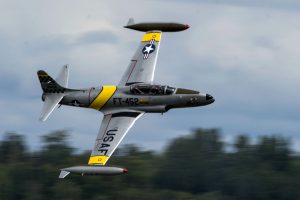
History:
The T-33 Shooting Star was first produced in 1948. Its only major variant incorporated a basic camera port at the request of foreign governments wishing to turn it into a reconnaissance aircraft. This aircraft was unique in that it was perhaps one of the only jet fighters to be produced with straight wings. The first major generation of jet fighters, such as the F-100 Super Saber and the F-104 Starfighter, would immediately drop that straight wing in favor of sharply angled wings.
 Uses:
Uses:
Nonetheless, the T-33 Shooting Star saw active use by the United States Air Force for its training programs from 1948 until it was finally retired in the late 1990s. In foreign countries, a limited number are still in use as proficiency trainers for pilots. What the T-33 got right was its utter simplicity in design and subsonic speeds. Both were ideal for beginners.
The original T-33 Shooting Star proved so reliable as a trainer that the U.S. Navy adopted a revised version, the 2V-1/T-1A SeaStar, for training pilots to take off from aircraft carriers.
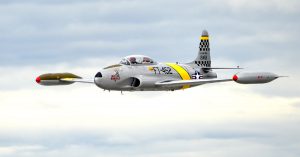
T-33 to F-80:
Despite its predecessor, the P-80, having been built towards the very end of World War II, this aircraft model was late for the war. By the time the Korean War broke out, the Air Force had already moved on to much more advanced jet fighters such as the McDonnell F-2H Banshee, Lockheed F-94 Starfire, and the F-86 Saber. Once the Air Force separated from the Army, the P-80 was eventually renamed the F-80. A variant of the F-80 would go on to serve in the Korean War as a reconnaissance aircraft. In some very limited cases, it also served as a day time high altitude interceptor. The F-80 was even credited with downing a Russian-made MiG-15 in 1950. This proved that despite considerable advancement in the arena of jet fighter technology, the F-80 was still a very formidable and rugged airframe.
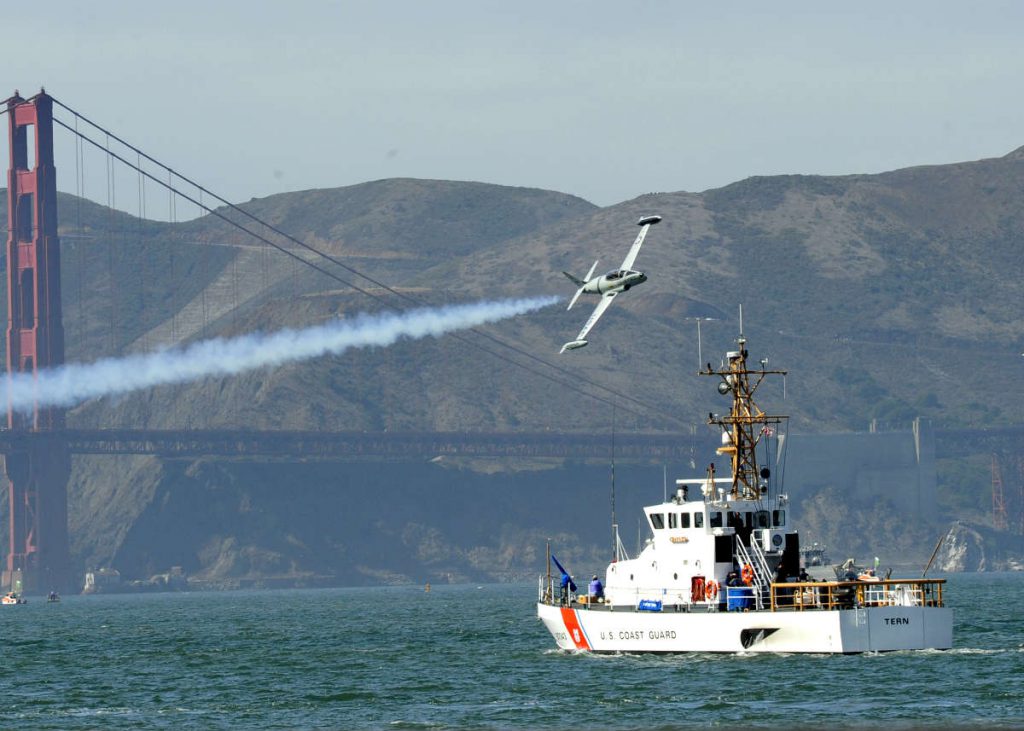
This made it all the more highly sought after by both jet fighting institutions in the United States as well as abroad. The F-80 was a reliable, albeit antiquated style, but proved itself more than capable of taking out a technologically superior aircraft.
While the T-33 Shooting Star is still held under ITAR for foreign or private export, a number of them have drifted into the civilian market. Both hobbyist jet pilots and seasoned veterans appear to appreciate this testament to the beginning of jet aviation.
See T-33 Shooting Star Specifications
| Manufacturer: Lockheed-Martin |
| Engine: Allison J33-A-35 centrifugal compressor turbojet |
| Thrust: 4,600lb/ft |
| Height: 11 ft 8 in (3.55 m) |
| Length: 37 ft 9 in (11.51 m) |
| Wingspan: 38 ft 11 in (11.85 m) |
| Empty Weight: 8,365 lbs (3,794 kg) |
| Max. Takeoff Weight: 15,061 lbs (6,832 kg) |
| Max. Speed: 600 mph (521 knots, 965 km/h) at sea level |
| Range: 1,275 mi (1,110 nmi, 2,050 km) |
| Service Ceiling: 48,000 ft (14,630 m) |
| Crew: Two; 1 pilot and 1 trainer |
